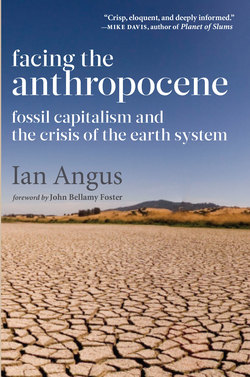Читать книгу Facing the Anthropocene - Ian Angus - Страница 10
На сайте Литреса книга снята с продажи.
ОглавлениеPART ONE
A NO-ANALOG STATE
For nearly a decade after it first appeared in scientific literature in 2000, the word Anthropocene remained the exclusive property of specialists in Earth sciences. It was seldom heard, and even less often discussed, outside scientific circles.
But in 2011, a web search for Anthropocene produced over 450,000 hits, “Welcome to the Anthropocene” was a cover headline on The Economist, the Royal Society devoted an entire issue of its journal to it, the Dalai Lama held a seminar, and the Vatican commissioned and published a report.
There are now three academic journals devoted to the Anthropocene. It has been the subject of dozens of books, hundreds of academic papers, and innumerable articles in newspapers, magazines, websites, and blogs. There have been exhibitions about art in the Anthropocene, conferences about the humanities in the Anthropocene, novels about love in the Anthropocene, and there’s even a heavy metal album called The Anthropocene Extinction.
In the comic strip Dilbert, when Bob the dinosaur asked his smart watch for the time, the watch replied, “This is the Anthropocene epoch.”1
Rarely has a scientific term moved so quickly into wide acceptance and general use. Even more rarely has a scientific term been the subject of so much misinformation and confusion. As Australian environmentalist Clive Hamilton has justly complained, much of what is written about the subject appears to have come from “people who have not bothered to read the half-dozen basic papers on the Anthropocene by those who have defined it, and therefore do not know what they are talking about.”2
This book does not attempt to address all the political and philosophical debates the Anthropocene has generated, nor does it discuss specialized technical questions. It aims, rather, to provide essential background and context for activists who need to understand what the Anthropocene is and why it is important. Such an understanding is essential to the development of an effective ecosocialist movement today, and will be even more critical for building a post-capitalist society tomorrow.
Part One discusses how scientists came to identify a qualitative change in Earth’s most critical physical characteristics, and what the implications are for all living things, including humans.
